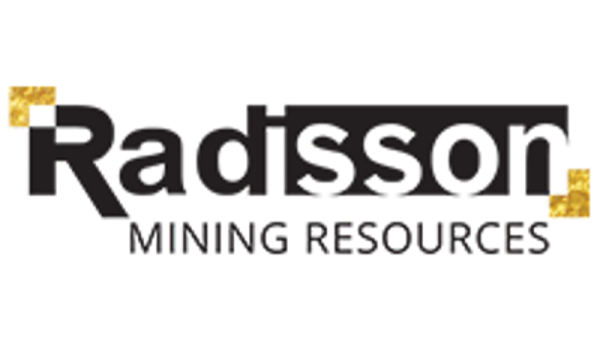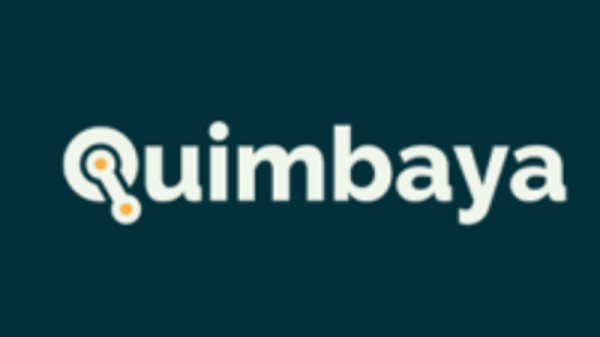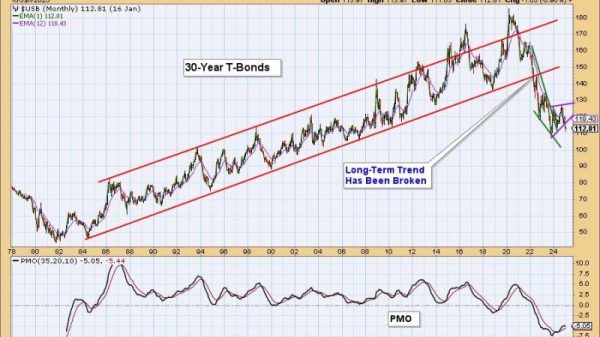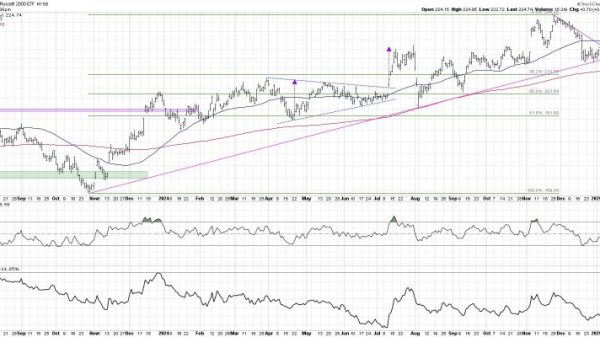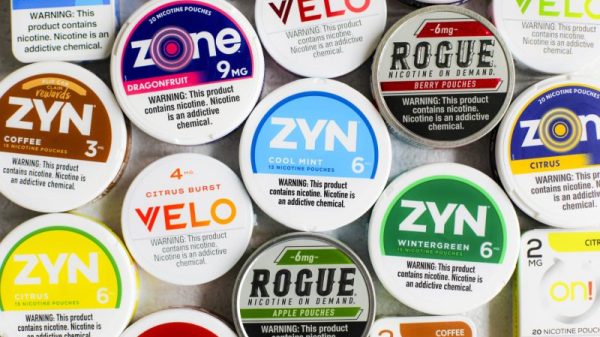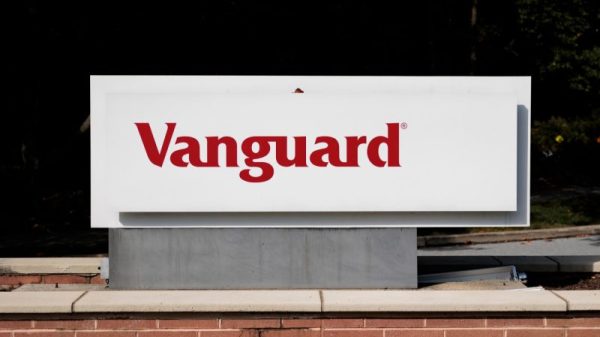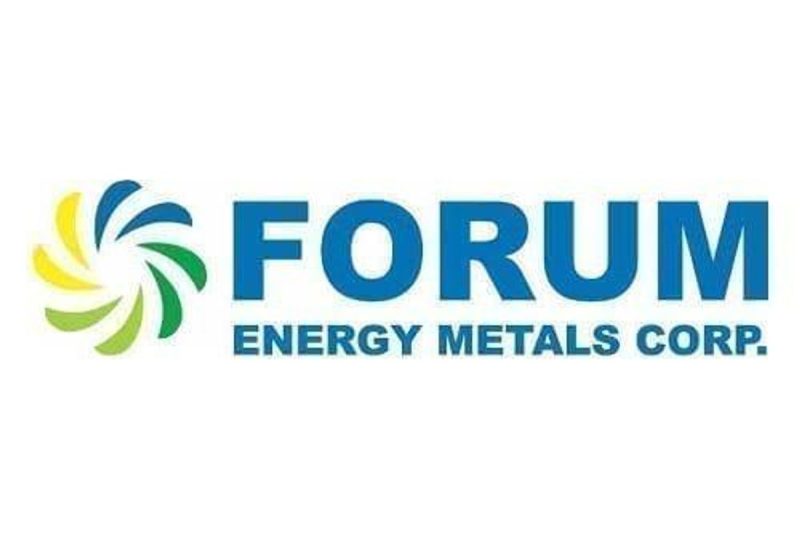Forum Energy Metals Corp. (TSXV: FMC) (OTCQB: FDCFF) (‘Forum’ or the ‘Company’) announces assay results from the remaining eight drill holes for the Tatiggaq anomaly completed as part of the 2024 exploration program on its 100% owned Aberdeen property in Nunavut, Canada. These drill holes were designed to test sub-parallel structures within the Tatiggaq gravity anomaly at significant step out intervals, demonstrating the large- scale potential of the project with the identification of a potential new zone 300 metres north of the Main Tatiggaq deposit. Drillhole TAT24-021 intersected 0.79% U3O8 over 0.1 m in a strong alteration zone with significant geochemical pathfinder elements at a depth of 221 metres.
Rick Mazur, CEO said, ‘Forum has the most advanced exploration property in the Thelon Basin right next door to an economically viable uranium deposit. This year’s drill program successfully expanded the footprint of our two basement-hosted discoveries, Tatiggaq and Qavvik and initiated our search for large unconformity contact-type deposits with drilling at the Ned, Ayra and Loki targets. With continued drilling of our numerous blue sky target areas and further resource delineation on the Aberdeen Project, we believe that a generational uranium mining district is unfolding.’
Dr. Rebecca Hunter, Forum’s VP, Exploration stated, ‘The objectives we had for the 2024 drilling at Tatiggaq were to expand within the proximal footprint but also to step out at significant intervals to identify potential new uranium zones. With this last series of holes, we intersected uranium mineralization outside of the current Tatiggaq deposit area. While the uranium intercept is small, this is significant as results from the other holes in the series included elevated levels of uranium and boron, an important pathfinder element for uranium mineralization in the Thelon Basin. We are encouraged for the potential of the area to host more zones of uranium mineralization to build the scale of the Tatiggaq deposit given half of the anomaly remains untested.’
ABERDEEN PROJECT – THELON BASIN – NUNAVUT
The Aberdeen Project consists of 950 square kilometres (2,460 square miles) of mineral claims in the Thelon Basin, located approximately 100 km west of Baker Lake, adjacent to the 127 million pound Kiggavik Project held by Orano/Denison/UEC*. The property was staked in 2021 by Forum and includes two preliminary discoveries: Tatiggaq and Qavvik which were made by Cameco, the previous operator. The previous operator drilled 135 holes totalling 36,100 metres, including 38 that were drilled into the Tatiggaq anomaly. Forum’s 2024 exploration program consisted of 30 diamond drill holes covering 6,962 meters. Figure 1 shows the 2024 drill hole locations and the main east-northeast structures (Thelon and Judge Sissons faults) as well as the numerous, sub-parallel subsidiary faults.
TATIGGAQ PROGRAM – TESTING SUB-PARALLEL STRUCTURES
Forum completed eight drill holes testing along the Tatiggaq Fault and subsidiary ENE-trending faults (A-F) to determine if there are additional mineralized zones or evidence of potential zones (Drill holes: TAT24-016 to TAT24-023). All eight drill holes intersected clay alteration and fault structures as well as elevated Boron, which is an important pathfinder element for uranium mineralization in the Thelon Basin. Maximum boron total digestion values of 967 ppm (TAT24-021), 792 ppm (TAT24-022), and 1,160 ppm (TAT24-023) were intersected. TAT24-021 also intersected elevated partial digestion values for Ag (23 ppm); As (151 ppm), Mo (4,200 ppm), and Zn (1,400 ppm), which are elements largely found very proximal to uranium mineralization in this area. Uranium mineralization was intersected in TAT24-021 and the intercept is as follows:
TAT24-021 intersected 0.38% U3O8 over 0.3 m from 220.8 to 221.1 m including:
0.79% U3O8 over 0.1 m (221.0 – 221.1 m)
TAT24-021 intersected strong clay alteration, as well as numerous fractures and breccias with abundant sooty sulphide and elevated radioactivity indicative of being potentially proximal to a mineralized zone. Elevated uranium was intersected in TAT24-017 (74 ppm); TAT24-019 (76 ppm); TAT24-020 (112 ppm) and TAT24-023 (87 ppm). These intersections coincided with increased fracturing, bleaching, sooty sulphide and clay alteration. TAT24-023 was attempting to follow-up on uranium mineralization intersected at TAT24-021 but was lost in strong clay alteration and will need to be retested. The northern part of the Tatiggaq anomaly has shown that it is highly anomalous in both uranium and boron and the entire northeast part of the anomaly was not tested in 2024. Future testing along of these fertile structures to the northeast, in particular the Tatiggaq Fault and the D Fault, could be prospective for additional zones. Figure 2 is a plan map showing the 2024 step out drill hole locations and the fault zones.
TATIGGAQ 2024 DRILL PROGRAM SUMMARY
Cameco drilled 38 holes on the Tatiggaq Main and West zones prior to Forum’s acquisition of the project by staking in 2021. Forum’s 2023 and 2024 drill programs were formulated to infill and extend areas within the inferred mineralization to commence development of a preliminary maiden resource. In total, Forum’s 2024 Tatiggaq exploration program consisted of 19 drill holes of which 11 were focused on the Main and West deposits and were designed to expand, infill and understand the resource within the proximal footprint of the existing discoveries. Eight drillholes tested sub-parallel structures at significant step out intervals and successfully identified a potential new zone 300 metres north of the Tatiggaq Main and West deposits.
Highlights of the program were:
Tatiggaq Main – Another parallel lense of high-grade uranium was intersected extending the width to 35 metres and remains open to a greater thickness.
Tatiggaq West – Drilling demonstrated lateral continuity and thickness to the west and remains open along strike and at depth.
Tatiggaq North – A potential new zone 300 metres north of the Main Tatiggaq deposit with an intersection of 0.79% U3O8 over 0.1 m at 221 m depth. The northern part of the Tatiggaq anomaly has shown that it is highly anomalous in both uranium and boron. The entire northeast part of the anomaly is prospective along the fertile structures to the northeast, in particular the Tatiggaq Fault and the D Fault.
Tatiggaq West Resampling – Forum resampled six historical uranium mineralized drill holes from the Tatiggaq West zone as these drill results were not filed publicly by the previous operator. These results now provide Forum with a complete mineralized assay database of the Tatiggaq West zone, and in concert with the public historical drill data and the drilling data from Forum’s 2023 and 2024 exploration programs, form the foundation for the development of an in-house resource at Tatiggaq.
Figure 1 Property map with the locations of the 2024 diamond drilling program on the Aberdeen Project. The drilling reported is within the Tatiggaq area.
To view an enhanced version of this graphic, please visit:
https://images.newsfilecorp.com/files/4908/236911_2fd986a3347e39f0_003full.jpg
Figure 2 The location of the 2024 Tatiggaq reconnaissance drilling with the main fault traces including the main Tatiggaq Fault and the subsidiary ENE-trending faults denoted A to F. Drill holes with elevated uranium and boron are shown.
To view an enhanced version of this graphic, please visit:
https://images.newsfilecorp.com/files/4908/236911_2fd986a3347e39f0_004full.jpg
QUALITY ASSURANCE AND QUALITY CONTROL (QA/QC)
Forum implemented a robust QA/QC program for its 2024 drill program, expanding upon the program used in 2023. This sampling program was used in the resampling program as well. The 2024 QA/QC program utilized control samples comprising certified reference materials (CRMs), duplicates, and blank samples. CRMs were used to monitor laboratory accuracy in the analysis of mineralized and non-mineralized samples, duplicate samples were used to monitor analytical precision and repeatability at the preparation and analytical stages, and blank samples were used to monitor for cross contamination during preparation and analytical stages.
Control samples were inserted every 10th sample, alternating between blank, duplicate, and uranium CRM. Duplicate samples alternated between field, coarse, and pulp duplicates. Three low grade uranium CRMs were alternated between: BL-4a (0.1248% U), DH-1a (0.2629% U), and BL-2a (0.426% U). A high-grade uranium CRM (BL-5; 7.09% U) was inserted into the sample sequence when counts exceeded 10,000 cps. Blanks and duplicates were inserted at a rate of 1-in-20 in non-mineralized holes. For mineralized holes, blanks, duplicates, and uranium CRMs were inserted at a rate of 1-in-30.
In addition to Forum’s QA/QC program, SRC Geoanalytical Laboratories (SRC) conducted an independent QA/QC program, and its laboratory repeats, non-radioactive laboratory standards (BSL18, BSM, BSH, DCB01), and radioactive lab standards (BL2A, BL4A, BL5, and SRCU02) were monitored and tracked by Forum staff.
For the resampling program the original sample intervals were identified from markers that still were present on the core boxes and quarter split samples were obtained from the remaining half split core that remained in the core boxes. The core was weathered and broken down in places due to the strong clay content in much of the mineralized intervals but it did not appear that any core was missing and it was in otherwise good condition.
ASSAYING AND ANALYTICAL PROCEDURES
Composite, Spot, and Assay samples were shipped to the ISO/IEC 17025: 2005 accredited SRC Geoanalytical Laboratories in Saskatoon for sample preparation and analysis.
Non-mineralized systematic and spot samples are dried, crushed, and pulverized for analysis by the ICP-MS Exploration Package for sandstone and basement (codes ICP-MS1 and ICP-MS2 respectively). This analytical package consists of three separate analyses of inductively coupled plasma – mass spectrometry (ICP-MS) and inductively coupled plasma – optical emission spectrometry (ICP-OES) on the partial and total digestions of an aliquot of sample pulp material. Partial digestion is completed via nitric and hydrochloric acids and total digestion is completed via hydrofluoric, nitric, and perchloric acids. The SRC implements several instrumental and analytical quality control procedures for this analytical package. Instrumental checks comprise two calibration checks and two calibration standards. Analytical quality control consists of one blank, two reference materials, and one pulp replicate (duplicate) in each group of 40 samples.
Samples with radioactivity over 500 CPS and indicated as assay samples were analysed using the ICP-MS Exploration Package (ICP-MS), ICP-OES (ICP1), and U3O8 Assay (U3O8 wt% Assay). The sample preparation procedures for ICP-MS and ICP1 are the same, and the U3O8 wt% assay uses an aliquot of sample pulp digested in hydrochloric and nitric acid followed by ICP-OES finish. This method is capable of detecting as low as 0.001 weight percent (wt%) U3O8. All Assay samples were also analysed for gold by fire assay using aqua regia with ICP-OES finish.
Boron analysis was conducted on all sample types and is completed by fusing an aliquot of sample pulp in a mixture of Na2O2 and NaCO3, followed by ICP-OES. The SRC inserts a blank, an in-house reference material, and a replicate sample with each batch for analytical quality control and uses a 1000 ppm B commercial certified solution for equipment calibration.
Downhole Radiometric Probing Method
Of the 30 holes completed in 2024,18 were successfully radiometrically logged using a 2GHF-1000 Triple Gamma downhole probe sourced from Terraplus in Ontario, Canada. The probe measures natural gamma radiation every 10 cm along the length of the drill hole. The total count NaI, which reports in count per second, may not be directly or uniformly related to uranium grades and are only an indication of the presence of radioactive minerals.
*Source: The Kiggavik deposit is held by Orano (66.2%), Denison (16.9%) and Uranium Energy Corp. (16.9%). Kiggavik mineral resources are 127.3 million pounds Indicated mineral resource grading 0.55% U3O8 and 5.4 million pounds Inferred mineral resource grading 0.33% U3O8 as reported on the Denison Mines Ltd. Corporate Presentation dated November 2024, p. 23 on their website and the Orano 2023 Activities Report converted from tonnes U to pounds U3O8 and from %U to %U3O8. Cut-off grades and other assumptions, parameters and methods used to estimate resources are unknown. A qualified person has not done sufficient work to classify the historical estimate as current mineral resources or mineral reserves and the issuer is not treating the historical estimate as current mineral resources or mineral reserves.
Rebecca Hunter, Ph.D., P.Geo., Forum’s Vice President of Exploration and Qualified Person under National Instrument 43-101, has reviewed and approved the contents of this news release.
ABOUT Forum Energy Metals
Forum Energy Metals Corp.(TSXV: FMC) (OTCQB: FDCFF) is focused on the discovery of high-grade unconformity-related uranium deposits in the Athabasca Basin, Saskatchewan and the Thelon Basin, Nunavut. In addition, Forum holds a diversified energy metal portfolio of copper, nickel, and cobalt projects in Saskatchewan and Idaho. For further information: https://www.forumenergymetals.com.
This press release contains forward-looking statements. Forward-looking statements address future events and conditions and therefore involve inherent risks and uncertainties. Actual results may differ materially from those currently anticipated in such statements. Forward-looking information is subject to known and unknown risks, uncertainties and other factors that may cause Forum’s actual results, level of activity, performance or achievements to be materially different from those expressed or implied by such forward-looking information. Such factors include but are not limited to: uncertainties related to the historical data, the work expenditure commitments; the ability to raise sufficient capital to fund future exploration or development programs; changes in economic conditions or financial markets; changes commodity prices, litigation, legislative, environmental and other judicial, regulatory, political and competitive developments; technological or operational difficulties or an inability to obtain permits required in connection with maintaining or advancing its exploration projects.
ON BEHALF OF THE BOARD OF DIRECTORS
Richard J. Mazur, P.Geo.
President & CEO
Neither the TSX Venture Exchange nor its Regulation Services Provider (as that term is defined in the policies of the TSX Venture Exchange) accepts responsibility for the adequacy or accuracy of this release.
For further information contact:
Rick Mazur, P.Geo., President & CEO
mazur@forumenergymetals.com
Tel: 604-630-1585
To view the source version of this press release, please visit https://www.newsfilecorp.com/release/236911
News Provided by Newsfile via QuoteMedia


